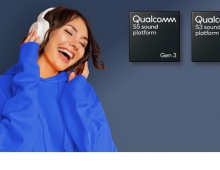
Sharp Receives Investment Packet From Qualcomm
Sharp said Monday that it has received a second US$60 million investment from Qualcomm, making the U.S. company Sharp's third-largest shareholder.
Qualcomm, through subsidiary Pixtronix, has teamed with Sharp to mass produce displays based on its MEMS (microelectromechanical systems) technology, the pixels of which are based on tiny mechanical shutters that flash open and closed to display colors. Advantages of the technology include the much faster response times and uses a fraction of the power required by LCDs, but cost-competitive manufacturing has proven difficult.
Bioth companies are now moving toward commercialization, although no target dates were announced.
According to the deal between the two companies. Qualcomm agreed to invest $120 million in Sharp in two blocks, the first of which was paid later that month.
MEMs screens use a back light that cycles through a sequence of colors, synchronized with an array of tiny shutters that serve as pixels, flashing open briefly to let certain colors through.
The MEMS shutters have a faster reaction time than LCD pixels, and don't require color filters so the back light needs less power to operate.
Qualcomm currently holds a 3.5 percent share in Sharp, and Samsung Electronics follows closely after its $110 million in the Japanese company in March.
Bioth companies are now moving toward commercialization, although no target dates were announced.
According to the deal between the two companies. Qualcomm agreed to invest $120 million in Sharp in two blocks, the first of which was paid later that month.
MEMs screens use a back light that cycles through a sequence of colors, synchronized with an array of tiny shutters that serve as pixels, flashing open briefly to let certain colors through.
The MEMS shutters have a faster reaction time than LCD pixels, and don't require color filters so the back light needs less power to operate.
Qualcomm currently holds a 3.5 percent share in Sharp, and Samsung Electronics follows closely after its $110 million in the Japanese company in March.





















